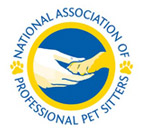My large lab loves to sniff the behind of every dog that walks by us: big or small, friendly or fierce. I embarrasingly call out “He’s overly friendly.” Pet owners will tolerate her first approach with tail wagging, nose twitching, as she heads straight for their pet’s rear end. “Peppi, give them some space, please!” Just what do dogs really learn from sniffing each other’s butt?
“Think of it kind of like speaking with chemicals,” referring to the release of glandular secretions by glands in a dog’s anal sac. “In fact, this butt-sniffing action is just a way of canine greeting. With a few short sniffs a dog can establish location, diet, illness, and readiness to mate. It is their way of deciding whether the backside in question is worth their time.” -Huffington Post.
My Peppi has an extraordinary sniffer, not just for dogs! He can find a peanut butter jar buried at the bottom of the recycing bin. How powerful is his nose? The scientific answer is that dogs noses are one hundred thousand times more sensitive than humans due to their three hundred million olfactory sensors (compared to six million in a human nose – pitiful).
So, how can my Pepe the super-sniffer make sense of the glandular secretions of another dogs anal sac?
“Dogs have a second olfactory system that’s known as the Jacobson’s organ. Its nerves direct the chemical information it detects directly to the brain so there’s no interference from other odors” -iheartdogs.com.
When a dog sniffs, two different things are happening:
1 He inhales the scented chemicals into his nasal cavities, where they are trapped in mucus and processed by the sensory cells. Inside the nostrils are cilia that contain many scent receptors. After the cell receptors trap the smells, each cell has several (10 to 100) axons that deliver their messages directly to the olfactory bulb.
2. He inhales into the sensory cells of Jacobson’s Organ that does not communicate with the olfactory bulbs and cortex, but with “the accessory bulbs and the part of the brain that coordinates mating and other basic emotions. In fact, recent evidence suggests that the two separate but parallel systems of odor detection cooperate in surprising ways to produce novel sensibilities not achievable by either of them on their own” -Whole Dog Journal.
When Pepe meets a dog he likes, they move around to sniff the back-end. This provides their emotional state, if they are in heat, info about their diet and health – a “How are you doing today?” greeting. If the dog is more aggressive, they will stay nose to nose and not offer any additional information!











